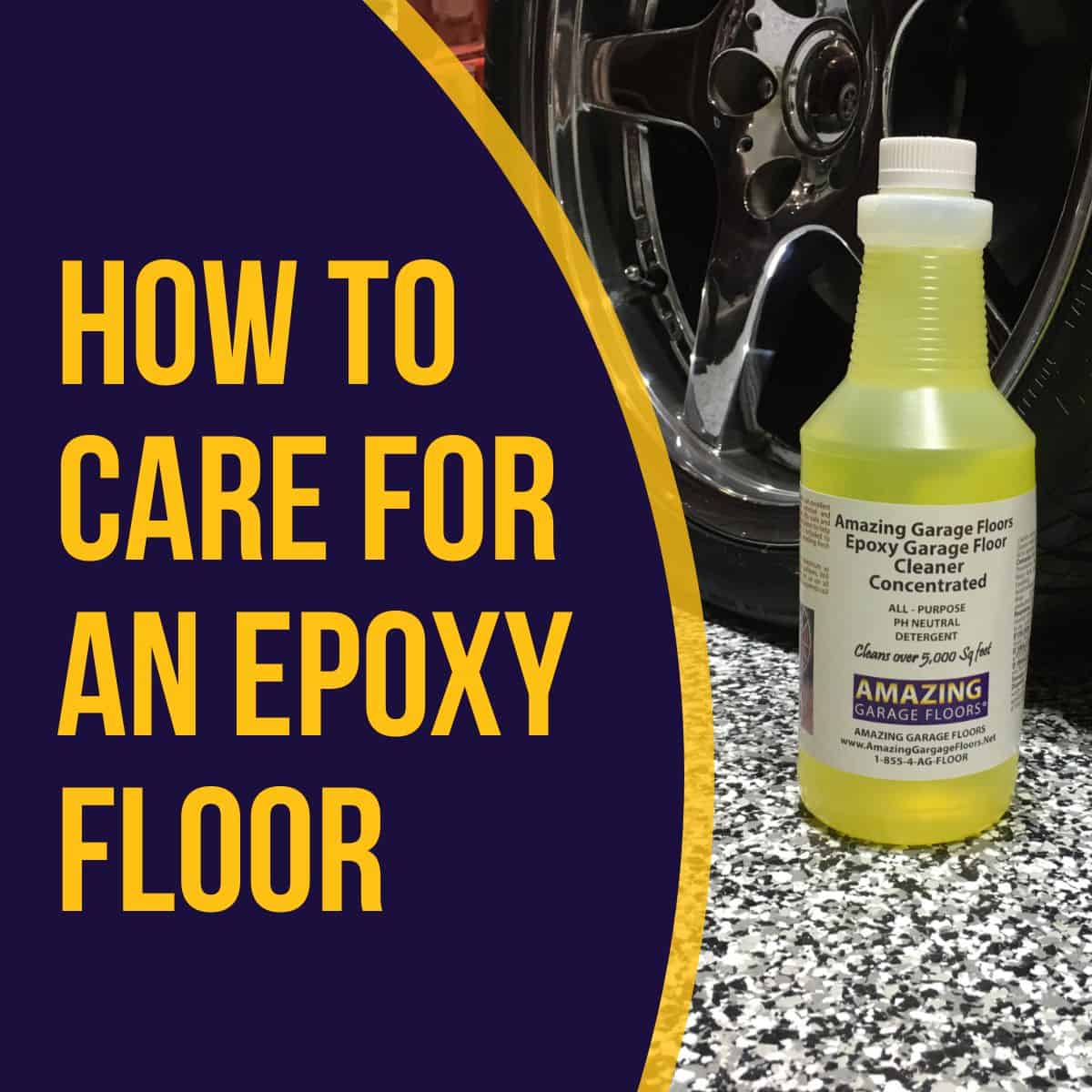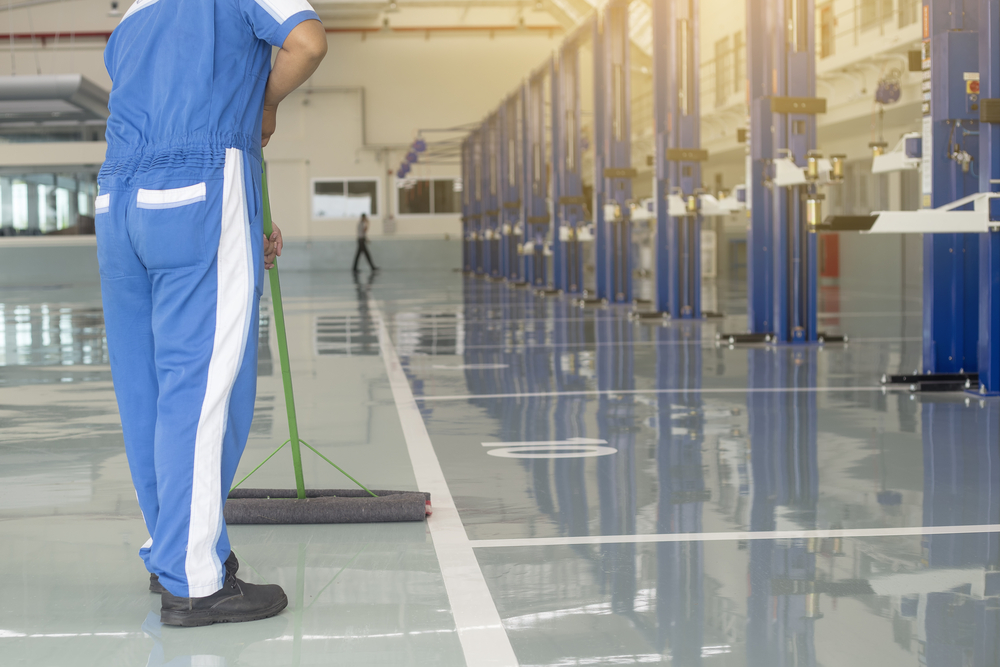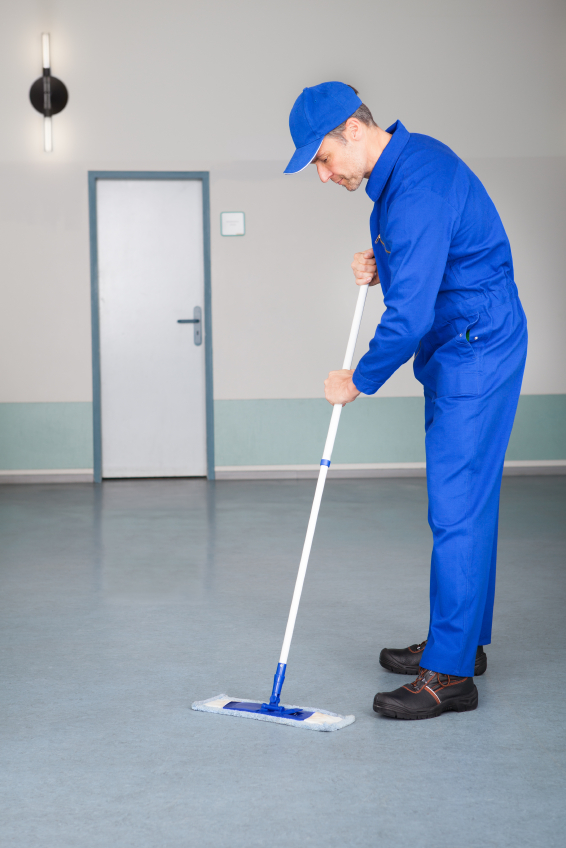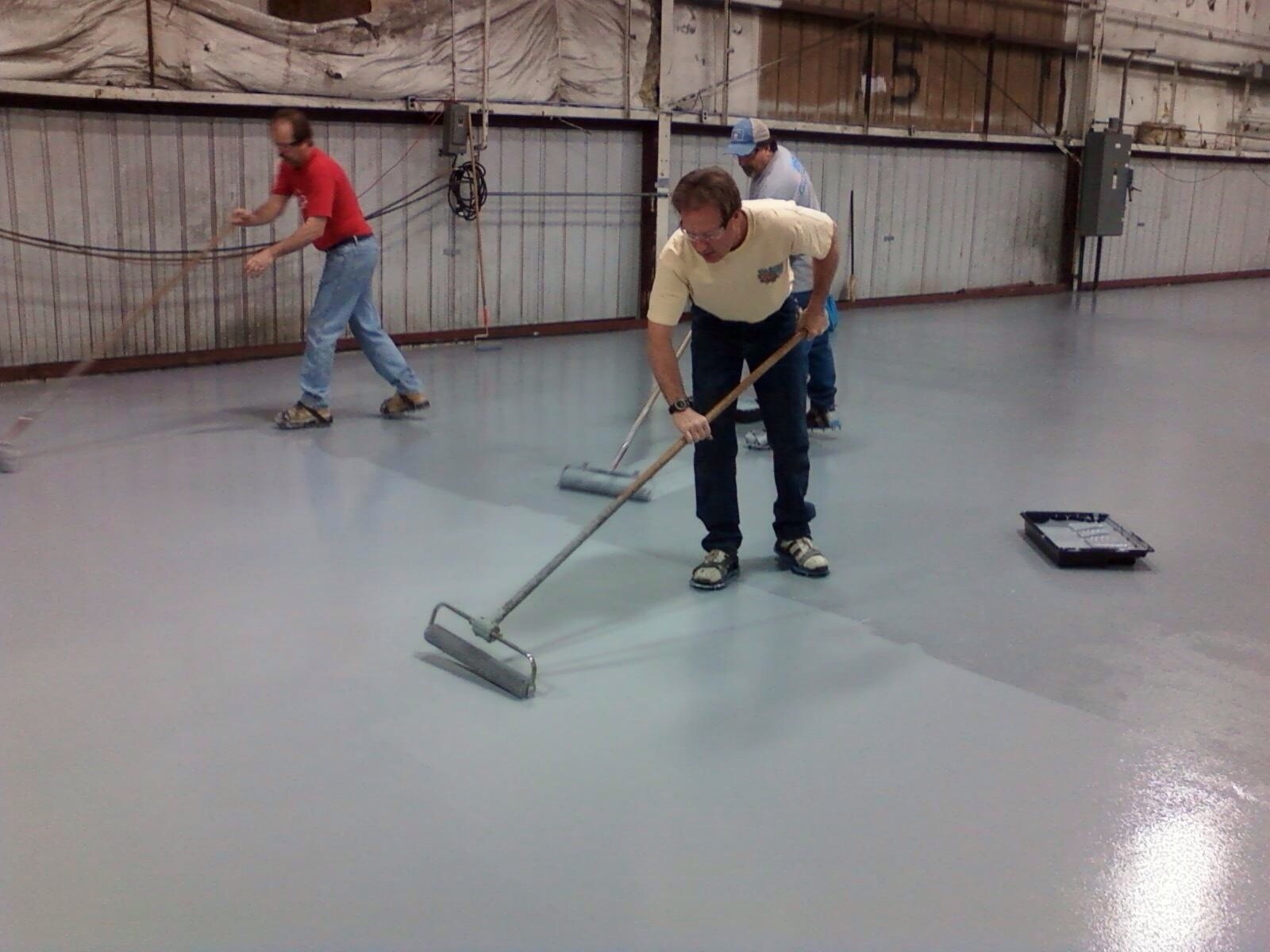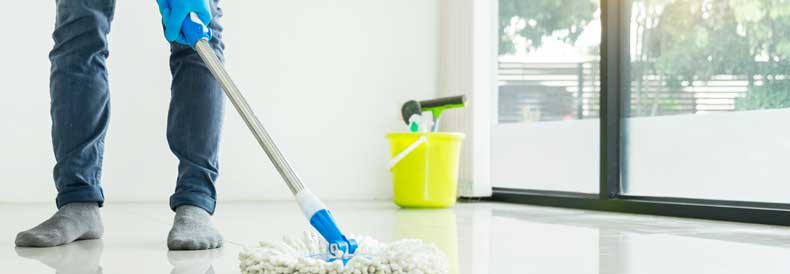Understanding the Basics of Epoxy Floor Maintenance
When I first installed my epoxy floor, I was thrilled with how sleek and modern it looked. However, I quickly realized that keeping it looking pristine required more than just an occasional sweep. Understanding the fundamentals of epoxy floor maintenance is crucial to preserving its beauty and longevity. Here are the key aspects I focus on to keep my epoxy floor in top condition:
- Regular Dusting and Sweeping: Dust and dirt are inevitable, but they can be especially problematic for epoxy floors. I’ve found that sweeping daily or at least every other day helps prevent these particles from scratching the surface or dulling the finish.
- Using the Right Cleaning Products: Not all cleaning products are suitable for epoxy floors. I always opt for a pH-neutral cleaner that won’t damage the surface. Avoid acidic or alkaline cleaners, as they can wear down the epoxy over time.
- Mopping for a Deeper Clean: While sweeping is essential, mopping is just as important. I use a soft mop with warm water and my preferred gentle cleaner to remove any stubborn dirt or grime that sweeping might have missed.
- Spot Cleaning for Stains: Accidents happen, and when they do, I’m quick to spot clean. Whether it’s an oil spill or a food stain, addressing it immediately prevents it from setting into the epoxy and becoming a permanent eyesore.
- Protecting High-Traffic Areas: High-traffic areas can wear down more quickly. I’ve placed rugs or mats in these spots to reduce wear and tear. This small step has gone a long way in preserving the floor’s finish.
- Regular Inspections for Damage: Finally, I make it a habit to inspect my floor regularly. Catching minor chips or cracks early allows me to address them before they become bigger problems that require more extensive repairs.
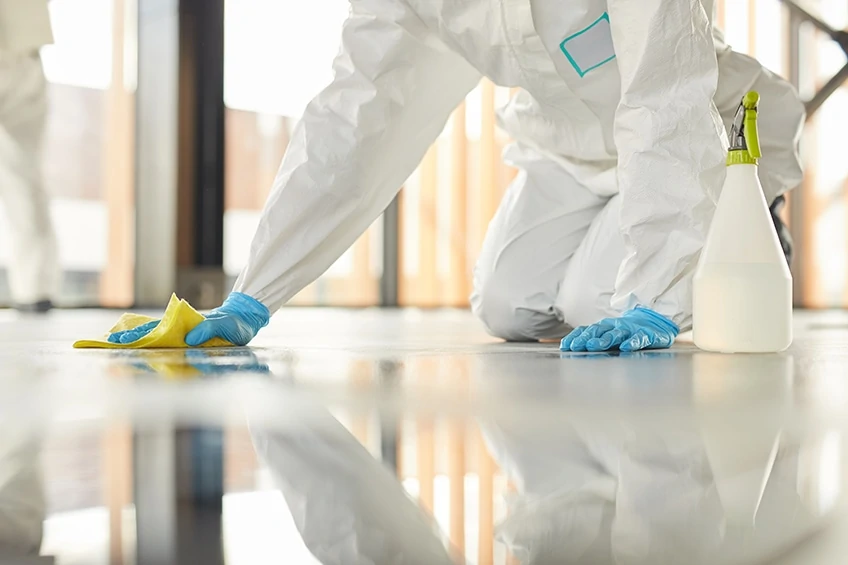
Daily Cleaning Routine for Epoxy Floors
Keeping an epoxy floor looking its best requires a daily cleaning routine that’s easy to follow yet highly effective. After experimenting with different methods, I’ve nailed down a routine that ensures my floor stays spotless and shiny. If you’re wondering how to keep your epoxy floor in pristine condition day after day, here’s the routine that works for me:
Start with a Thorough Sweep: Every morning, I begin by sweeping the entire floor with a soft-bristle broom. This helps remove any dust or debris that might have settled overnight, preventing scratches and keeping the floor smooth.
Use a Dust Mop for Extra Cleanliness: After sweeping, I go over the floor with a dust mop. It’s amazing how much more dirt and dust this picks up. The dust mop glides easily over the floor, capturing even the smallest particles.
Tackle Spills Immediately: Throughout the day, I’m vigilant about cleaning up any spills as soon as they happen. Whether it’s a splash of water or something more substantial, immediate action prevents stains and keeps the epoxy surface in top shape.
Mop with a Gentle Cleaner: In the evening, I give the floor a quick mop using warm water and a pH-neutral cleaner. This not only cleans the floor but also helps maintain its shine. I make sure to use a soft mop to avoid any potential scratching.
Dry the Floor Thoroughly: After mopping, I always dry the floor with a clean towel or let it air dry if time permits. This step prevents water spots and ensures the epoxy retains its glossy finish.
Check for Problem Areas: Finally, I take a moment to inspect the floor for any signs of wear or damage. By catching issues early, I can address them before they become more serious, saving time and money in the long run.
Dealing with Stains and Spills on Epoxy Floors
No matter how careful I am, spills and stains are bound to happen. Whether it’s a dropped cup of coffee or an oil leak in the garage, I’ve learned that dealing with these messes promptly and correctly is key to maintaining the look of my epoxy floor. Here’s my go-to approach for tackling spills and stains effectively:
Act Fast to Prevent Staining
The first thing I’ve learned is that time is of the essence. Whenever a spill occurs, I clean it up immediately. The longer it sits, the higher the chance of it staining the epoxy, so quick action is crucial.
Blot, Don’t Scrub
When dealing with liquid spills, I always blot the area with a soft cloth rather than scrubbing. Scrubbing can spread the spill and potentially scratch the surface. Blotting absorbs the liquid without causing further damage.
Use the Right Cleaner
For tougher stains, I rely on a gentle, pH-neutral cleaner. I apply it to the stained area, let it sit for a few minutes, and then wipe it away with a clean cloth. This method has worked wonders for removing stubborn stains without harming the epoxy.
Addressing Oil and Grease Stains
In my garage, oil and grease stains are a common issue. For these, I use a degreaser specifically designed for epoxy floors. I apply the degreaser, let it work its magic, and then clean the area with warm water and a soft cloth.
Tackling Rust Stains
Rust stains can be particularly challenging, but I’ve found that using a mixture of water and a little bit of baking soda works well. I gently rub the paste on the stain, let it sit, and then wipe it off. This method has saved my floor from unsightly rust marks.
Preventing Future Stains
To avoid future stains, I’ve started placing mats or rugs in areas prone to spills, like near the kitchen sink or in the garage. These mats catch spills before they hit the floor, making my cleanup job a lot easier.
Preventing Scratches and Surface Damage
When I first got my epoxy floor, one of my biggest concerns was how to prevent scratches and surface damage. I wanted to keep that glossy, smooth finish intact for as long as possible. After some trial and error, I discovered a few strategies that have helped me protect my floor from unsightly scratches and wear. Here’s what I do:
Place Mats in High-Traffic Areas
High-traffic areas like entryways and hallways are more prone to wear and tear. I’ve placed rugs and mats in these areas to reduce the direct impact on the epoxy floor. Not only do they protect the floor, but they also add a touch of style.
Use Furniture Pads
Moving furniture around can easily scratch the floor. To prevent this, I’ve added felt pads to the bottom of all my furniture legs. These pads create a buffer between the furniture and the floor, preventing scratches when I move things around.
Avoid Dragging Heavy Items
I’ve learned the hard way that dragging heavy items across the floor is a big no-no. Instead, I lift and carry them or use a dolly with soft wheels. This simple adjustment has significantly reduced the risk of scratches.
Clean with Soft Tools
When it comes to cleaning, I always use soft-bristle brooms and mops. Harsh tools can scratch the epoxy surface, so I’ve made it a point to avoid anything abrasive. A gentle touch is all it takes to keep the floor looking flawless.
Regularly Inspect and Repair
Even with all these precautions, minor scratches can still occur. I regularly inspect the floor for any signs of damage and address them immediately. Small scratches are easy to repair with a touch-up kit, preventing them from becoming larger issues.
Avoid Hard Shoes Indoors
Finally, I’ve made it a rule to avoid wearing hard-soled shoes indoors, especially high heels. These can easily cause dents and scratches on the floor. Slippers or socks are my go-to for walking around on the epoxy floor.
Polishing and Restoring the Shine of Your Epoxy Floor
Over time, even the most well-maintained epoxy floor can start to lose its shine. When my floor began to look a little dull, I knew it was time to restore its luster. Polishing an epoxy floor is a straightforward process, but it requires the right approach to get that showroom-quality shine back. Here’s how I bring my epoxy floor back to life:
Start with a Deep Clean
Before polishing, I always begin with a thorough cleaning. I sweep and mop the floor to remove any dirt or debris that could interfere with the polishing process. A clean surface is essential for a smooth, even shine.
Choose the Right Polish
Not all polishes are created equal. I’ve found that using a high-quality, water-based polish specifically designed for epoxy floors works best. It’s important to choose a product that won’t leave a residue or dull the finish over time.
Apply the Polish Evenly
When applying the polish, I use a microfiber mop or a soft applicator. I work in small sections, applying the polish evenly and avoiding streaks. This method ensures a consistent shine across the entire floor.
Buff for Extra Gloss
For an extra glossy finish, I like to buff the floor after the polish has dried. I use a soft buffing pad or a floor buffer on a low setting. Buffing enhances the shine and gives the floor that polished, mirror-like look.
Maintain the Shine
After polishing, I’m careful to maintain the shine by following my regular cleaning routine. I avoid using harsh chemicals or abrasive tools that could dull the finish. Instead, I stick to gentle cleaners and soft mops to keep the floor looking its best.
Schedule Regular Polishing
Finally, I’ve made polishing a part of my regular maintenance schedule. Depending on the level of traffic in your space, polishing every few months can keep the floor looking fresh and new. It’s a small effort that makes a big difference in the floor’s appearance.
Long-Term Care: Inspecting and Recoating Your Epoxy Floor
When I first had my epoxy floor installed, I knew it was a long-term investment. To protect that investment, I’ve made regular inspections and occasional recoating a priority. This proactive approach has helped me maintain the durability and appearance of my floor over time. Here’s what I’ve learned about long-term care for epoxy floors:
Schedule Regular Inspections
I’ve found that inspecting the floor every few months is essential. I look for signs of wear, like small cracks, chips, or areas where the shine has faded. Catching these issues early allows me to address them before they become major problems.
Touch-Up Small Repairs
When I notice minor damage, like a small chip or scratch, I don’t wait to fix it. I use an epoxy touch-up kit to fill in the damaged area, which prevents it from getting worse. This simple step has saved me from more extensive repairs down the line.
Plan for Recoating
After a few years of use, I realized that the floor could benefit from a fresh coat of epoxy. Recoating not only restores the shine but also adds an extra layer of protection. I’ve found that recoating every 3-5 years, depending on traffic, keeps the floor looking and performing like new.
Prepare the Surface for Recoating
Before applying a new coat, I make sure the floor is thoroughly cleaned and any damaged areas are repaired. Proper preparation ensures that the new coat adheres well and creates a smooth, even surface.
Apply the Recoat Evenly
When it’s time to recoat, I follow the manufacturer’s instructions carefully. I apply the new epoxy layer evenly across the floor, using a roller or squeegee to ensure there are no bubbles or streaks. Patience is key during this step to achieve a flawless finish.
Allow Proper Curing Time
After recoating, I give the floor ample time to cure. This means avoiding foot traffic or placing any objects on the floor for at least 24-48 hours. Proper curing is essential to ensuring the new coat bonds well and lasts for years to come.
Common Mistakes to Avoid in Epoxy Floor Maintenance
When I first started maintaining my epoxy floor, I made a few mistakes that could have been avoided with a bit more knowledge. Over time, I’ve learned what works and, more importantly, what doesn’t. Avoiding these common pitfalls has made a huge difference in how my floor looks and lasts. Here’s a rundown of mistakes I’ve learned to steer clear of:
Using Harsh Cleaners
One of my early missteps was using a harsh cleaner that left my floor dull and streaky. Now, I stick to pH-neutral cleaners designed for epoxy. Harsh chemicals can damage the epoxy surface, so it’s best to avoid them entirely.
Ignoring Spills
In the beginning, I didn’t always clean up spills right away, thinking they wouldn’t cause much harm. I quickly learned that letting spills sit can lead to stains or even weaken the epoxy. Now, I clean up any spills as soon as they happen.
Scrubbing with Abrasive Tools
I once used a scrub brush on a stubborn stain, only to find that it scratched the surface. I’ve since switched to soft cloths and non-abrasive tools for cleaning. Gentle cleaning methods are much better at preserving the floor’s finish.
Dragging Heavy Items
Moving heavy furniture or equipment without lifting it caused some deep scratches in my floor. I’ve learned to always lift or use soft-wheeled dollies to move heavy items, protecting the epoxy from damage.
Neglecting Regular Maintenance
There was a time when I thought my epoxy floor was low-maintenance and didn’t require much attention. Skipping regular cleaning and inspections, however, led to more significant problems down the road. Now, I stick to a consistent maintenance routine to keep the floor in top shape.
Skipping Recoating
Finally, I underestimated the importance of recoating. Waiting too long to apply a new coat left parts of the floor vulnerable to wear and tear. I’ve since learned that recoating on a regular schedule is essential for maintaining the floor’s durability and appearance.
How to clean Epoxy Floor – Helpful Guide for Epoxy Floor Maintenance
Consistent Epoxy Flooring Maintenance Creates a Quality Environment
Epoxy Flooring Blogs Maintenance Tips For Epoxy Flooring
Related Posts:
